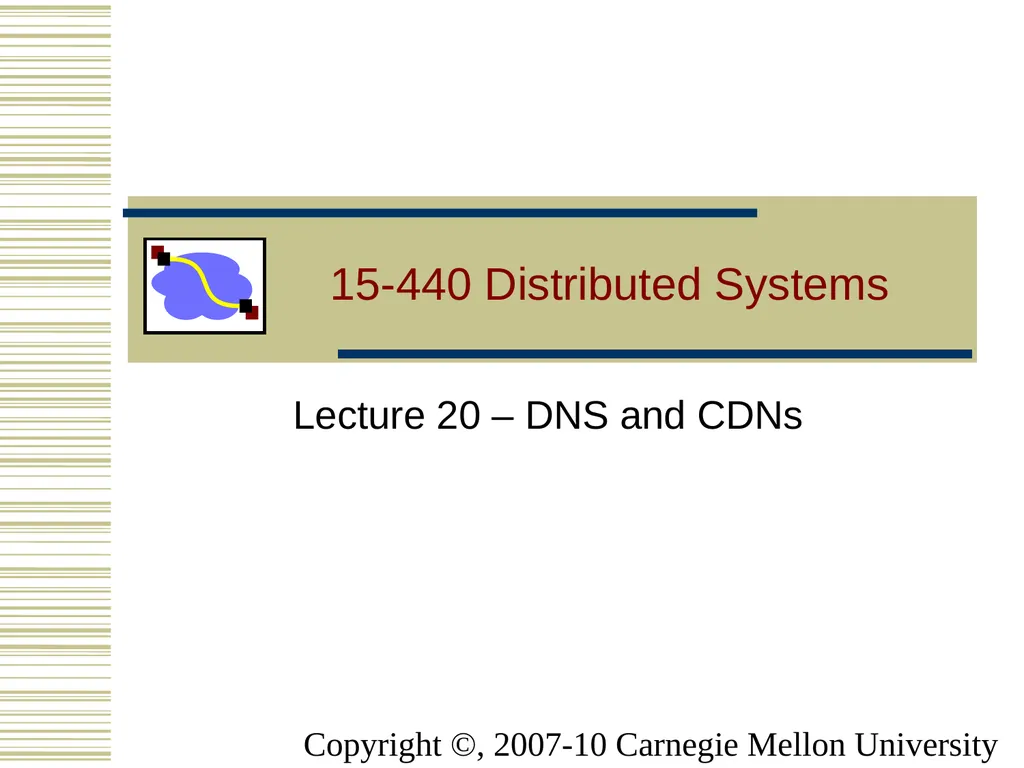
15-440 Distributed Systems Lecture 20 – DNS and
Author: debby-jeon | Published: 2025-08-16
Description: 15-440 Distributed Systems Lecture 20 DNS and CDNs Copyright , 2007-10 Carnegie Mellon University Outline DNS Design DNS Today Content Distribution Networks 2 Naming How do we efficiently locate resources? DNS: name IP address
Download Presentation
Download the PPT/PDF: Download
Transcript:
Loading transcript�